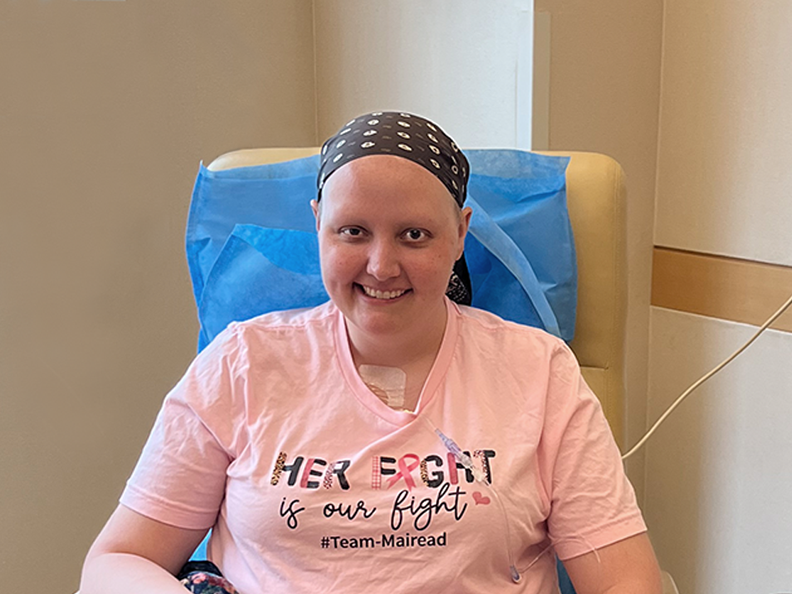Your gift is 100% tax deductible
What Causes Ewing Tumors?
The cause s of Ewing tumors (Ewing sarcomas ) are not fully understood, but researchers are learning how certain changes in a cell’s DNA can cause the cell to become cancerous. DNA is the chemical in each of our cells that makes up our genes.
Genes tell our cells how to function. They are packaged in chromosomes, which are long strands of DNA in each cell. We normally have 23 pairs of chromosomes in each cell (one set of chromosomes comes from each parent). We usually look like our parents because they are the source of our DNA. But DNA affects more than how we look.
Some genes control when our cells grow, divide into new cells, and die:
- Genes that normallyhelp cells grow, divide, or stay alive can sometimes change to becomeoncogenes .
- Genes that help keep cell division under control, repair mistakes in DNA,or make cells die at the right time are called tumor suppressor genes.
Cancers can be caused by changes in the cell’s DNA that turn keep oncogenes turned on,or thatturn off tumor suppressor genes.
Researchers have found chromosome changes that lead to Ewing tumors, but these changes are not inherited. Instead, they develop in a single cell after a child is born, for unknown reasons.
Nearly all Ewing tumor cells have changes that involve the EWSR1 gene, which is found on chromosome 22. Most often, the change is a swapping of pieces of DNA (called a translocation) between chromosomes 22 and 11. Less often, the swap is between chromosomes 22 and 21, or rarely, between 22 and another chromosome. The translocation moves a certain piece of chromosome 11 (or another chromosome) just next to the EWSR1 gene on chromosome 22, causing the EWSR1 gene to be turned on all the time. Activation of the EWSR1 gene leads to overgrowth of the cells and to the development of Ewing tumors, but the exact way in which this happens is not yet clear.
In a very small portion of Ewing tumors, the cells have translocations that involve the FUS gene (on chromosome 16) instead of the EWSR1 gene.
Lab tests can be used to find chromosome translocations in Ewing tumor cells (see Tests for Ewing Tumors). If doctors aren 't sure if a tumor belongs to the Ewing family, they can use these tests on tumor samples to look for translocations and confirm the diagnosis.
The gene changes that lead to Ewing tumors are now fairly well known, but it’s still not clear what causes these changes. They might just be random event s that sometimes happen inside a cell, without having an outside cause. There are no known lifestyle-related or environmental causes of Ewing tumors, so it 's important to remember that at this time, nothing could have been done to prevent these cancers.
- Written by
- References

The American Cancer Society medical and editorial content team
Our team is made up of doctors and oncology certified nurses with deep knowledge of cancer care as well as editors and translators with extensive experience in medical writing.
Anderson ME, Dubois SG, Gebhart MC. Chapter 89: Sarcomas of bone. In: Niederhuber JE, Armitage JO, Doroshow JH, Kastan MB, Tepper JE, eds. Abeloff’s Clinical Oncology. 6th ed. Philadelphia, Pa: Elsevier; 2020.
DeLaney TF, Hornicek FJ, Bahrami A. Epidemiology, pathology and molecular genetics of the Ewing sarcoma family of tumors. UpToDate. Accessed at www.uptodate.com/contents/epidemiology-pathology-and-molecular-genetics-of-the-ewing-sarcoma-family-of-tumors on October 30, 2020.
National Cancer Institute. Ewing Sarcoma Treatment (PDQ). 2020. Accessed at https://www.cancer.gov/types/bone/hp/ewing-treatment-pdq on October 30, 2020.
Last Revised: May 25, 2021
American Cancer Society medical information is copyrighted material. For reprint requests, please see our Content Usage Policy.
American Cancer Society Emails
Sign up to stay up-to-date with news, valuable information, and ways to get involved with the American Cancer Society.



